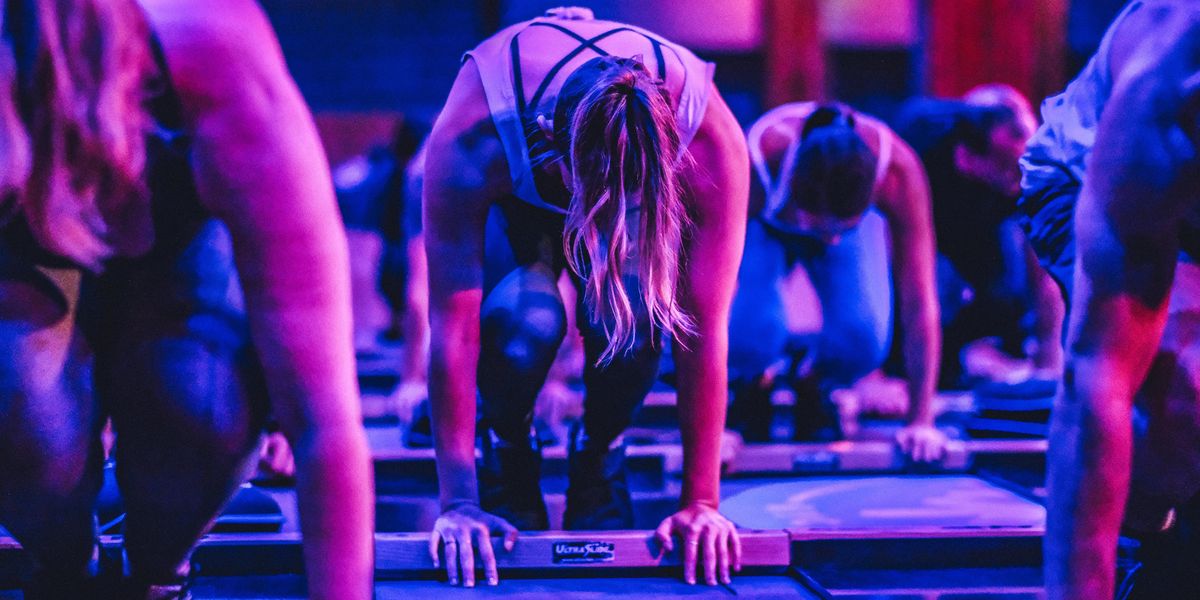We Tried It: Brrrn, The Cold-Temperature Workout
Dancers today have an overwhelming array of options at their fingertips: New fitness tools, recovery trends, workouts and more that claim to improve performance, speed up recovery or enhance training.
But which of these actually meet the unique demands of dancers? In our new series, “We Tried It,” we’re going to find out, sampling new health and fitness trends to see if they’re dancer-approved.
First up: Brrrn, the cold temperature fitness studio (the first and only of its kind, they claim) located in Manhattan.
What Is Brrrn?
 Brrrn’s infrared sauna
Brrrn’s infrared sauna
Cedric Terrell, Courtesy Brrrn
Aside from the giant walk-in refrigerator where classes take place, Brrrn feels much like your typical boutique fitness studio. They offer four types of classes at a range of temperatures: Flow, a yoga-inspired class taught at 60 degrees, Slide (the class I took), a core and cardio focused class taught on a slide board at 55 degrees, Hit + Slide, a dumbbell and slide board circuit series taught at 50 degrees, and Hit, a battle rope and dumbbell circuit series taught at 45 degrees. Brrrn also has an infrared sauna that they recommend using after working out in the cold studio. Classes and sauna sessions are sold separately, and each cost $34.
So why the cold temps? Brrrn’s website alleges that the body burns more fat and calories in cooler temperatures. They also claim that we are more focused when exposed to the cold, and our bodies are slower to fatigue.
The Experience
 The cold-temperature studio and slide boards.
The cold-temperature studio and slide boards.
Brendan McCarthy, Courtesy Brrrn
Though Slide isn’t nearly the coldest of Brrrn’s classes, I was still startled by the temperature when I entered the studio. (They suggest wearing light layers as if for a “crisp fall morning.”)
The studio consists of around 30 slide boards and a bit of space behind the board where we warmed up (with lunges, squats and arm circles). After we put booties on over our sneakers (they’re basically hospital booties that allow you to slide on the board), much of the class consisted of sliding back and forth, which they call Position 1. (Position 2 is the same movement but with the upper body hinged at the hips; in Position 3 you hinge a bit lower to touch the floor on either side of the board.)
This is actually easier said than done: It took a while to figure out just how hard to push off the side of the board to get across to the other side without flying off. I still didn’t quite have the hang of it by the end of class, and never got to the point where I felt safe going fast enough to really get my heart rate up.
The rest of class consisted of exercises like planks, mountain climbers, push-ups, lunges and squats, all made more difficult by the slippery surface. I had to engage my core more than usual for stability, which was great, but I also felt my feet and ankles tensing up, trying to grip the floor. (I’m sure this becomes less of an issue as you get more used to sliding.)
I honestly didn’t notice the colder temperature changing my experience of the workout, except for sweating less than usual. But I did like the way the slide board challenged my stability, and with the already-slippery board, I’m not sure it’s a workout I would feel safe doing while sweating a normal amount.
Is It Dancer-Approved?
 Brendan McCarthy, Courtesy Brrrn
Brendan McCarthy, Courtesy Brrrn
Is cold-temperature exercise a game-changer for dancers? Probably not. But Brrrn’s Slide class could be an option for dancers working on strength and stability: In the days following the class, lower abdominals that I’ve rarely been able to target through dance and Pilates felt sore.
I wouldn’t recommend Slide for dancers with sensitive knees or ankles, and like any new workout, don’t try it before a performance or audition.




